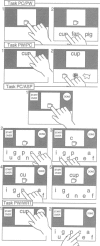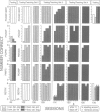Abstract
Computer-based instruction may yield widely useful handwritten spelling. Illustrative cases involved individuals with mental retardation and hearing impairments. The participant in Study 1 matched computer pictures and printed words to one another but did not spell the words to pictures. Spelling was then taught using a computerized procedure. In general, increases in the accuracy of computer spelling were accompanied by improvements in written spelling to pictures. Study 2 extended these results with a 2nd participant. After initial training, spelling improved in the context of a retrieval task in which the participant (a) wrote a list of the names of objects displayed on a table, (b) selected the objects from a shelf, and (c) returned the objects to the table. Nearly perfect accuracy scores declined on some retrieval trials conducted without a list, suggesting that the list may have served a mediating function during retrieval. Transfer of stimulus control of computer-based teaching to the retrieval task may have been attributable to the existence of stimulus classes involving pictures, objects, and printed words.
Full text
PDF
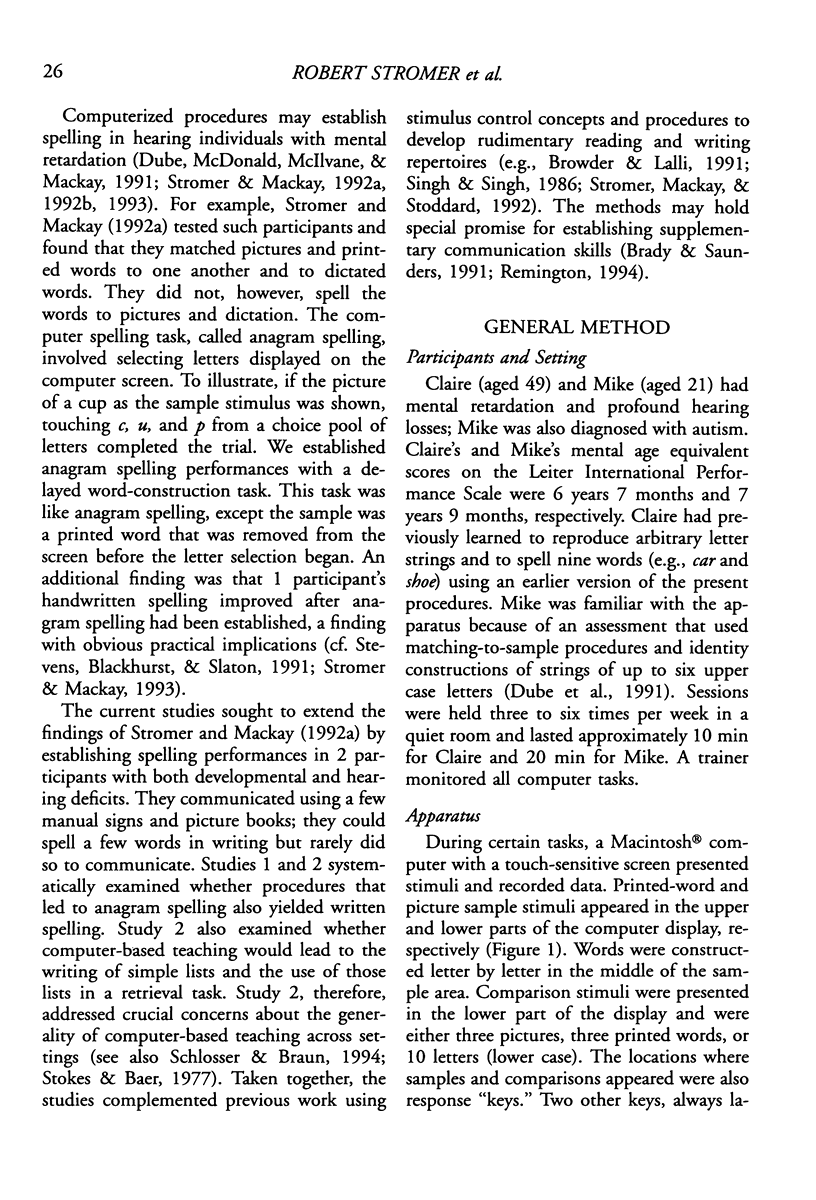
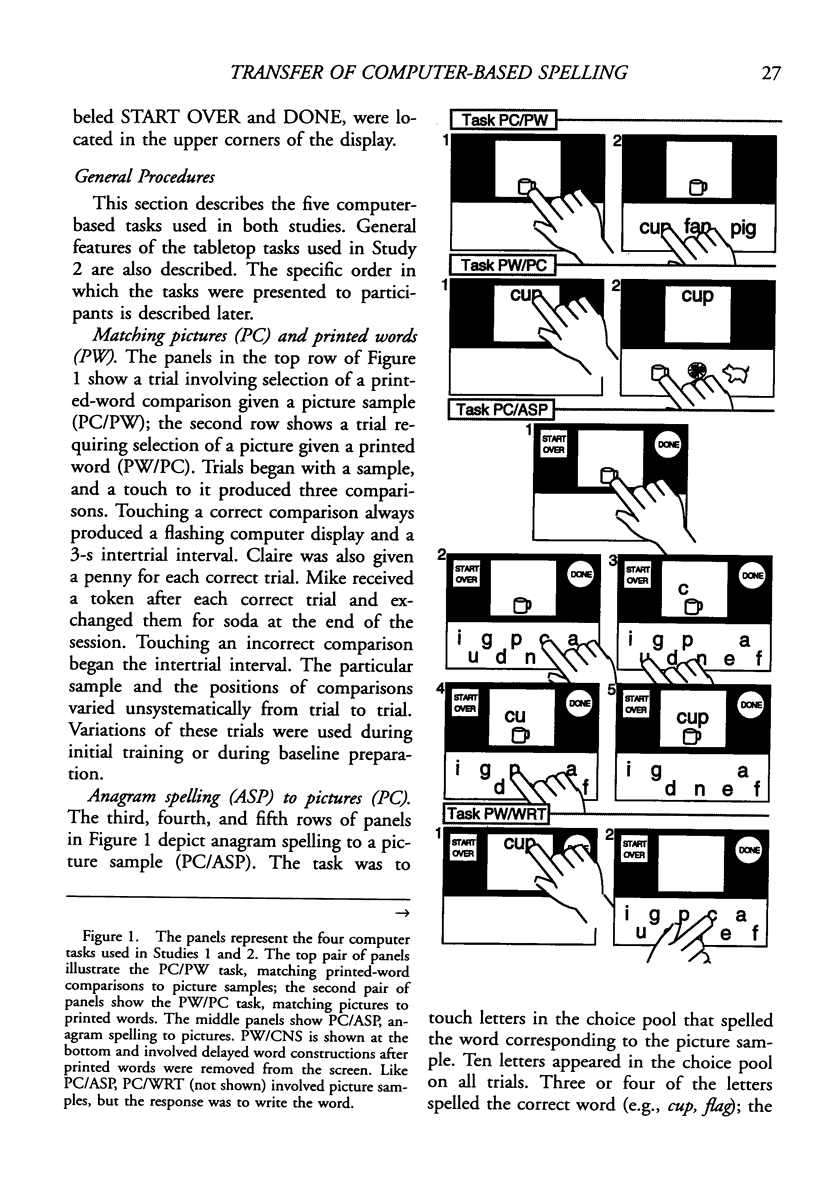
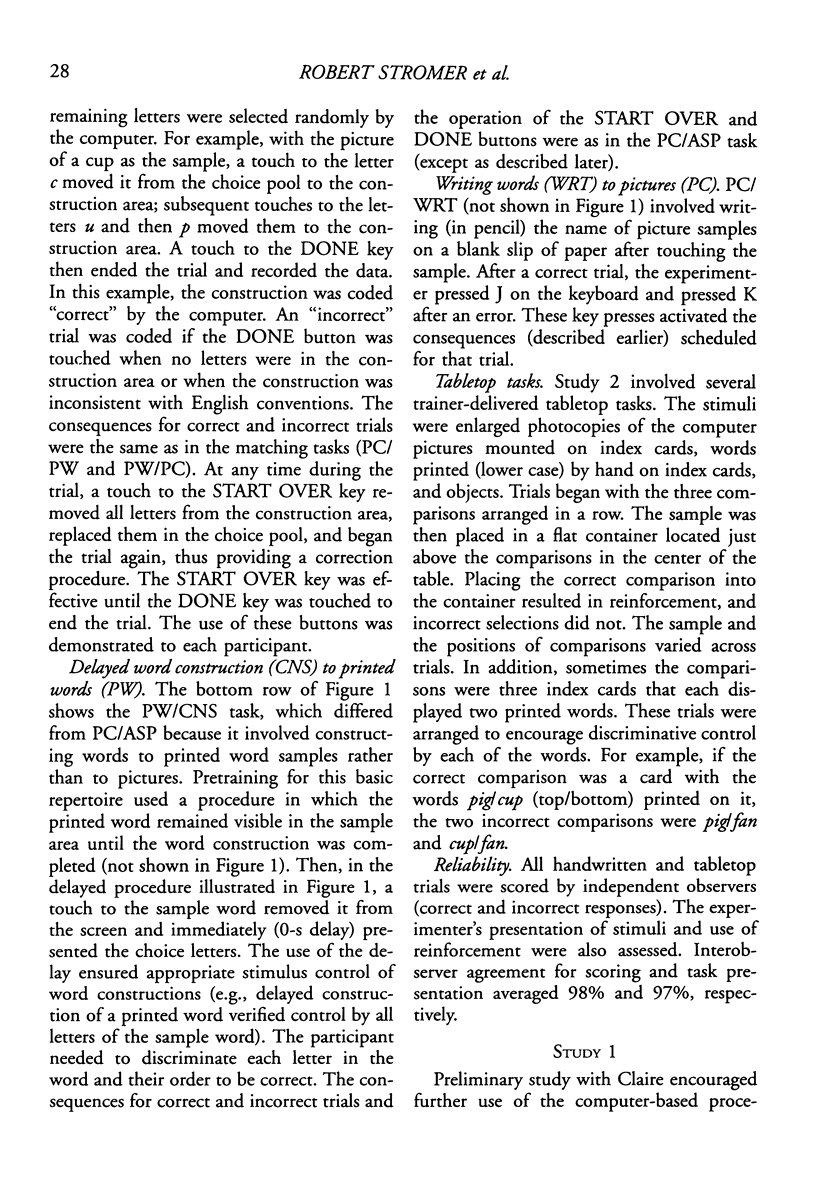
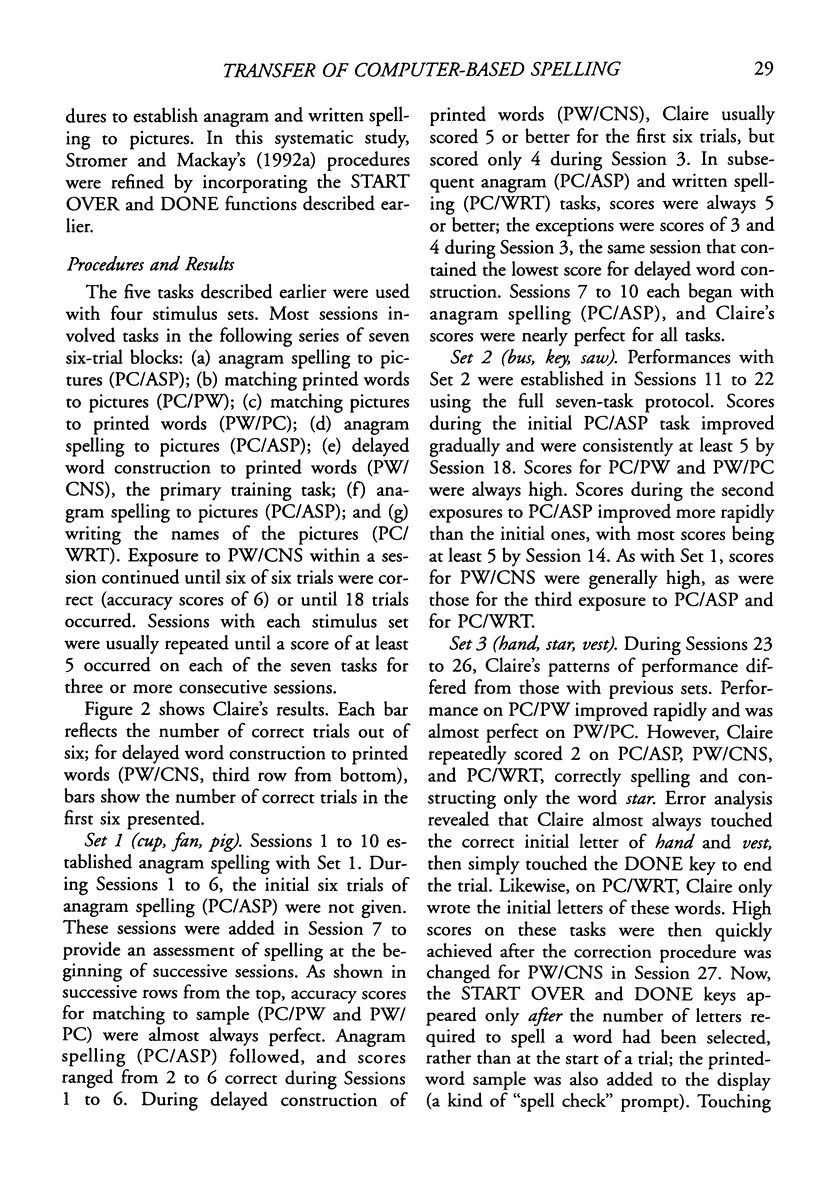
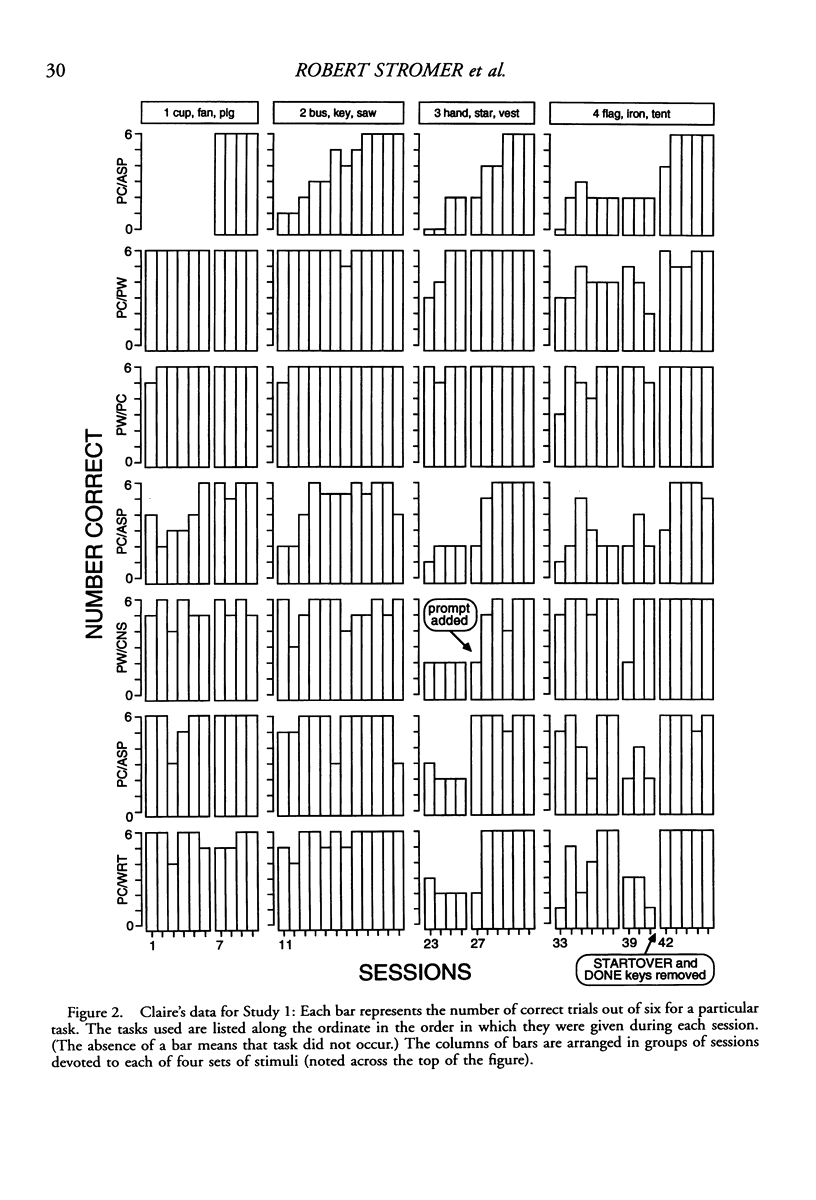
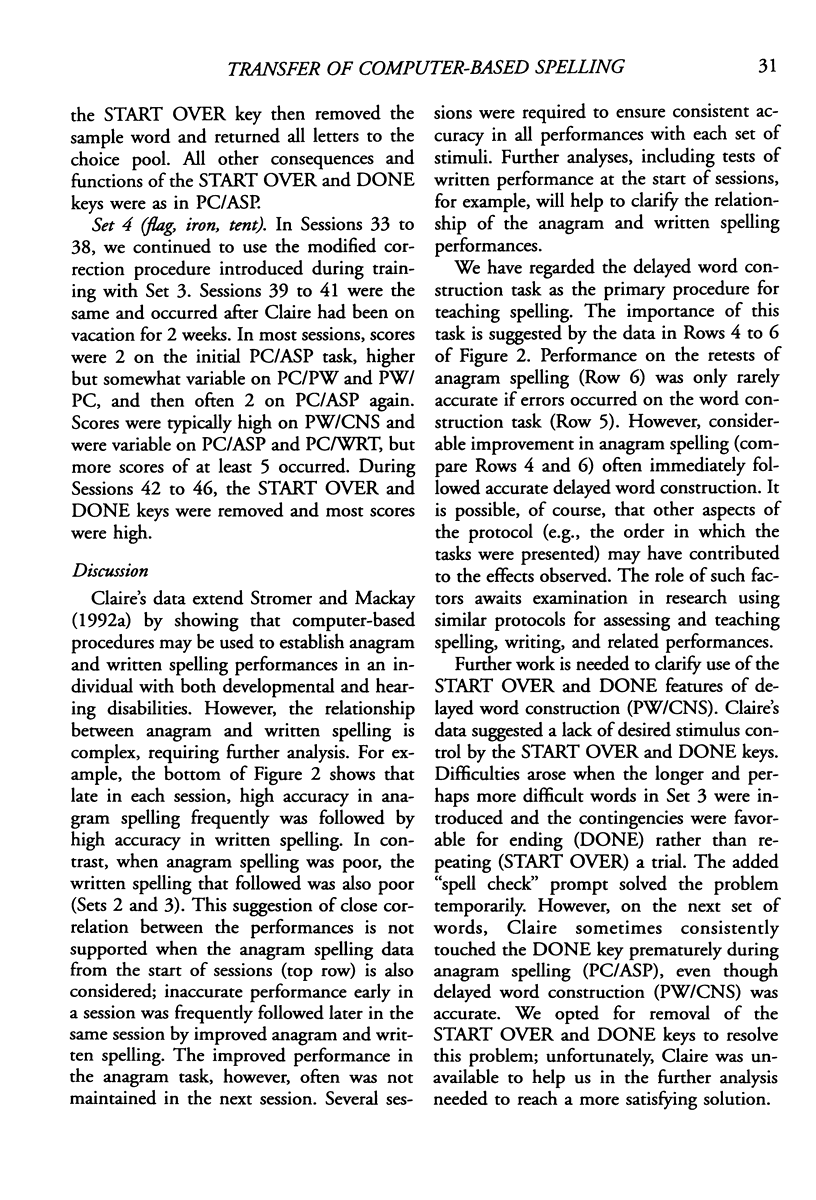
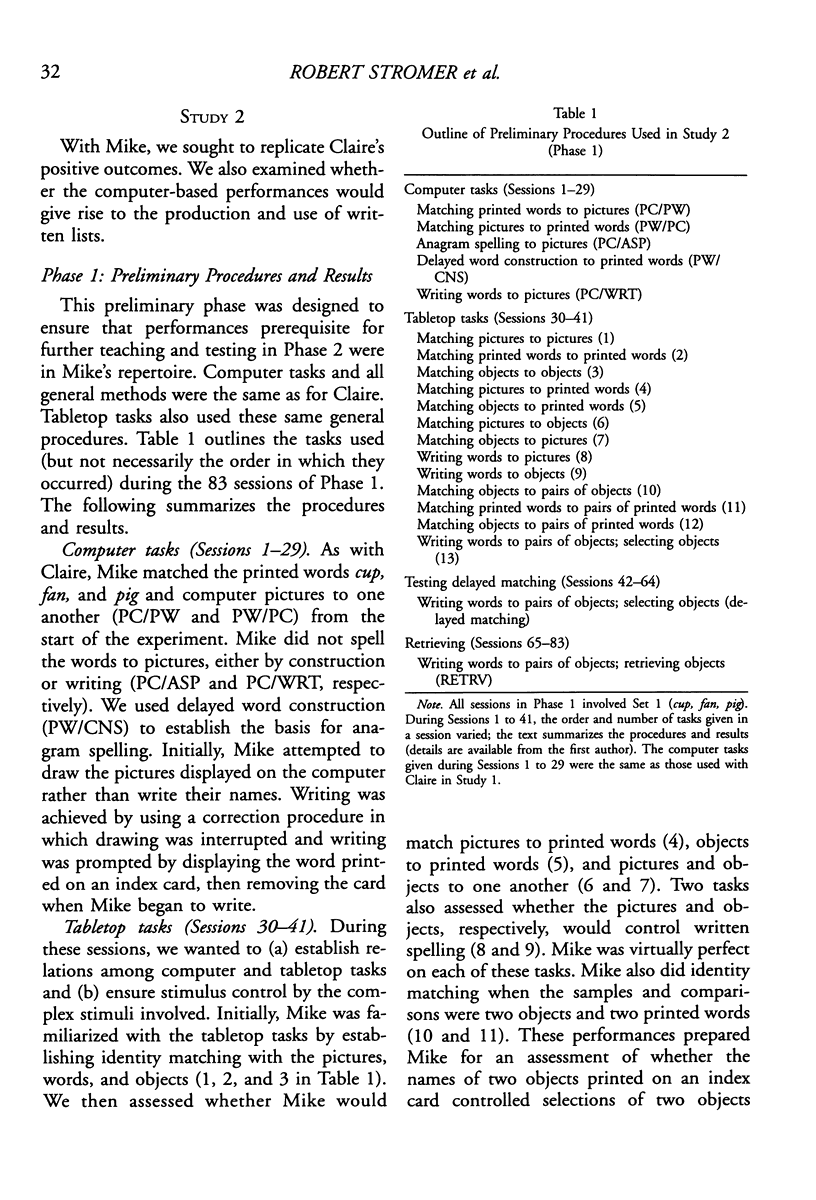
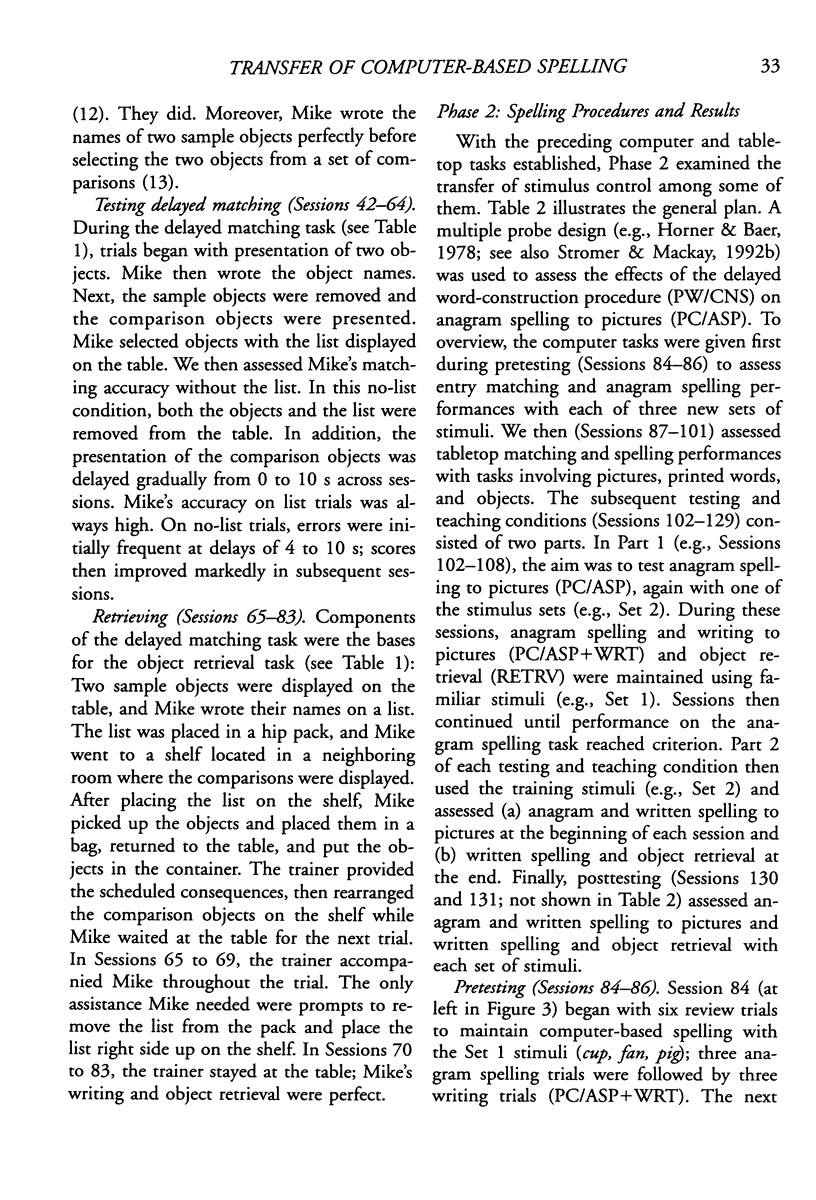
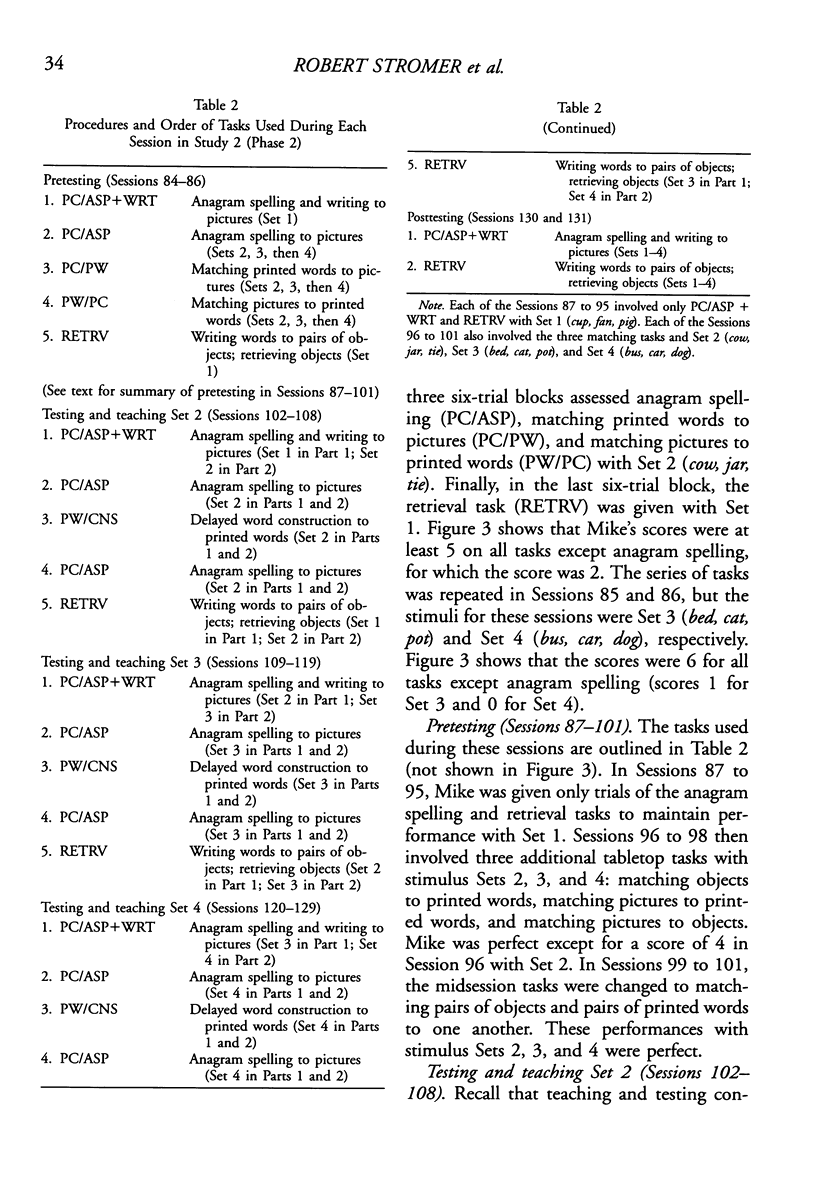
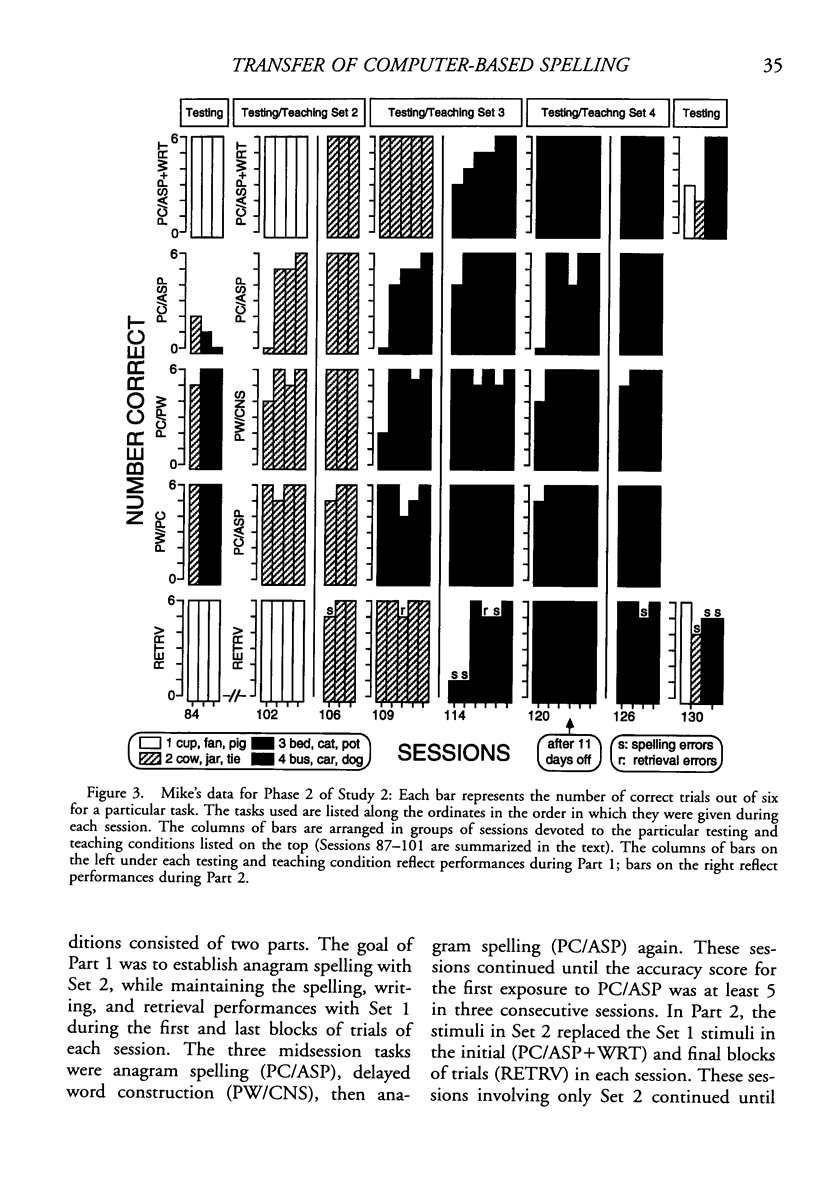
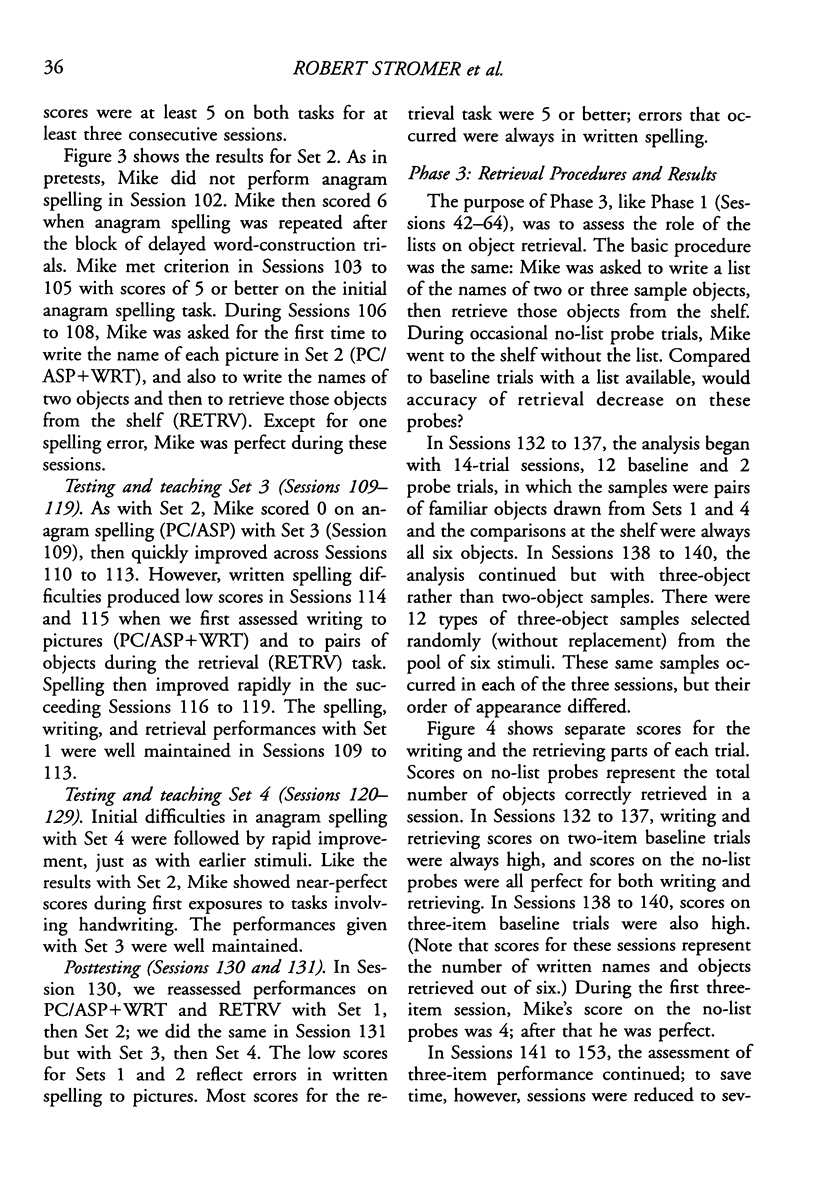

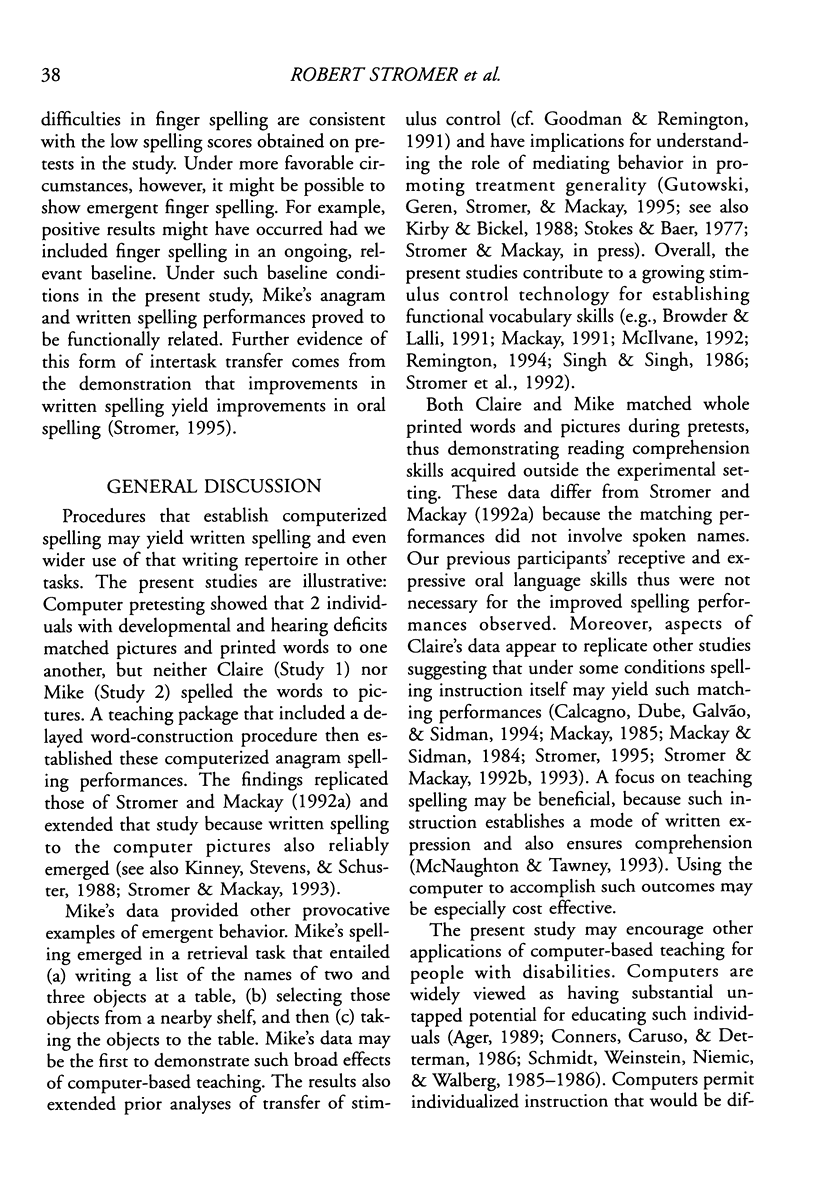
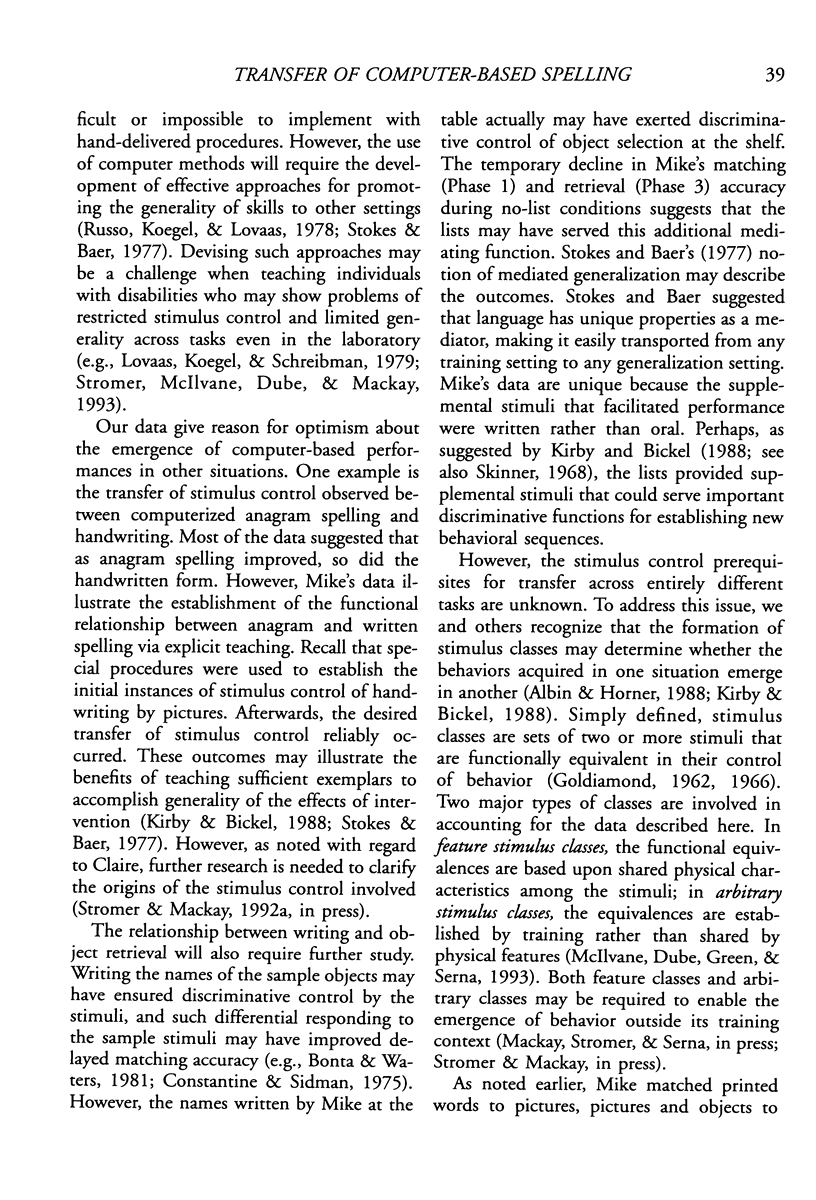
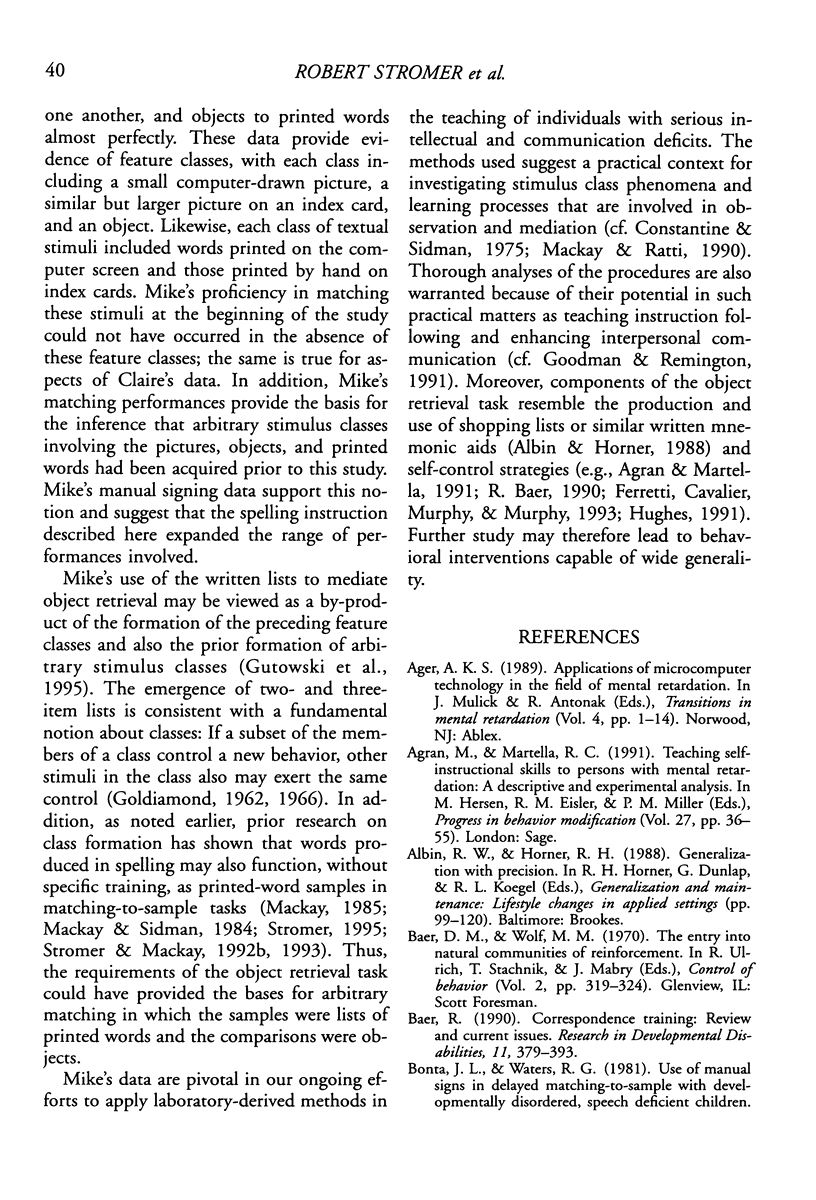
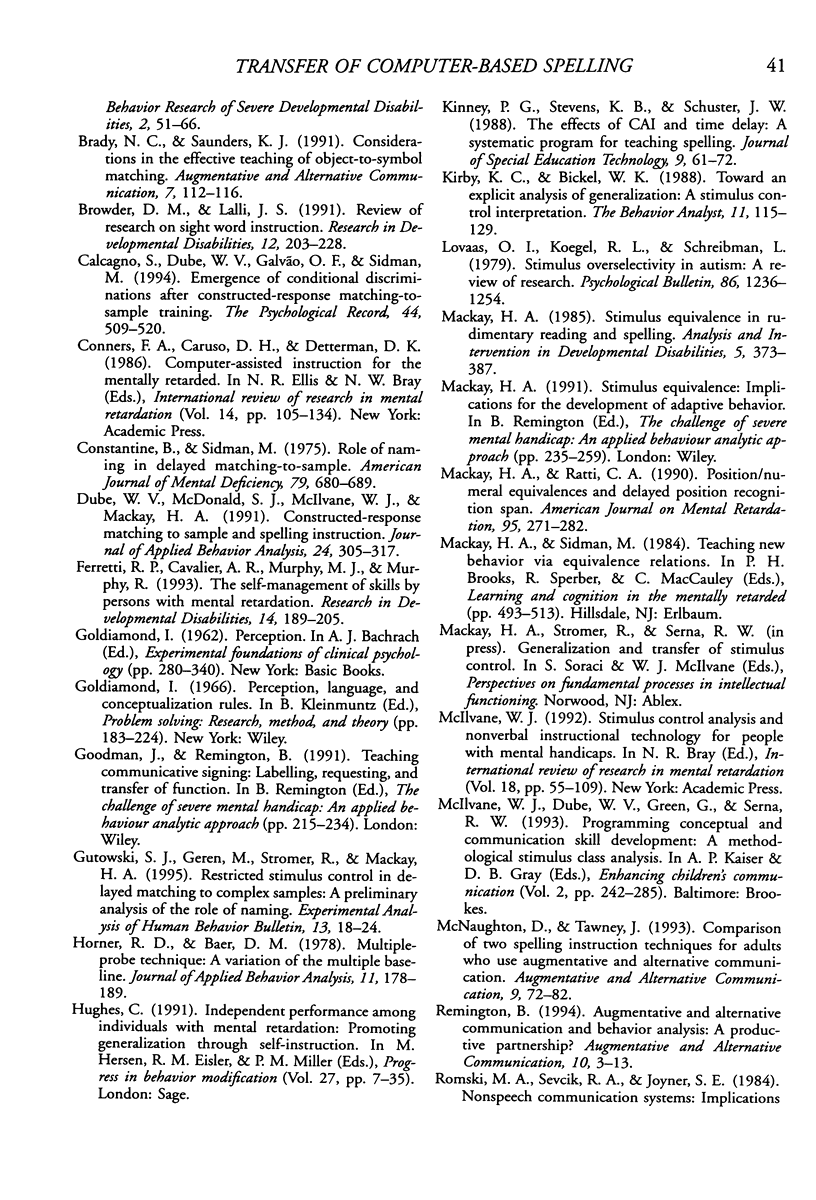
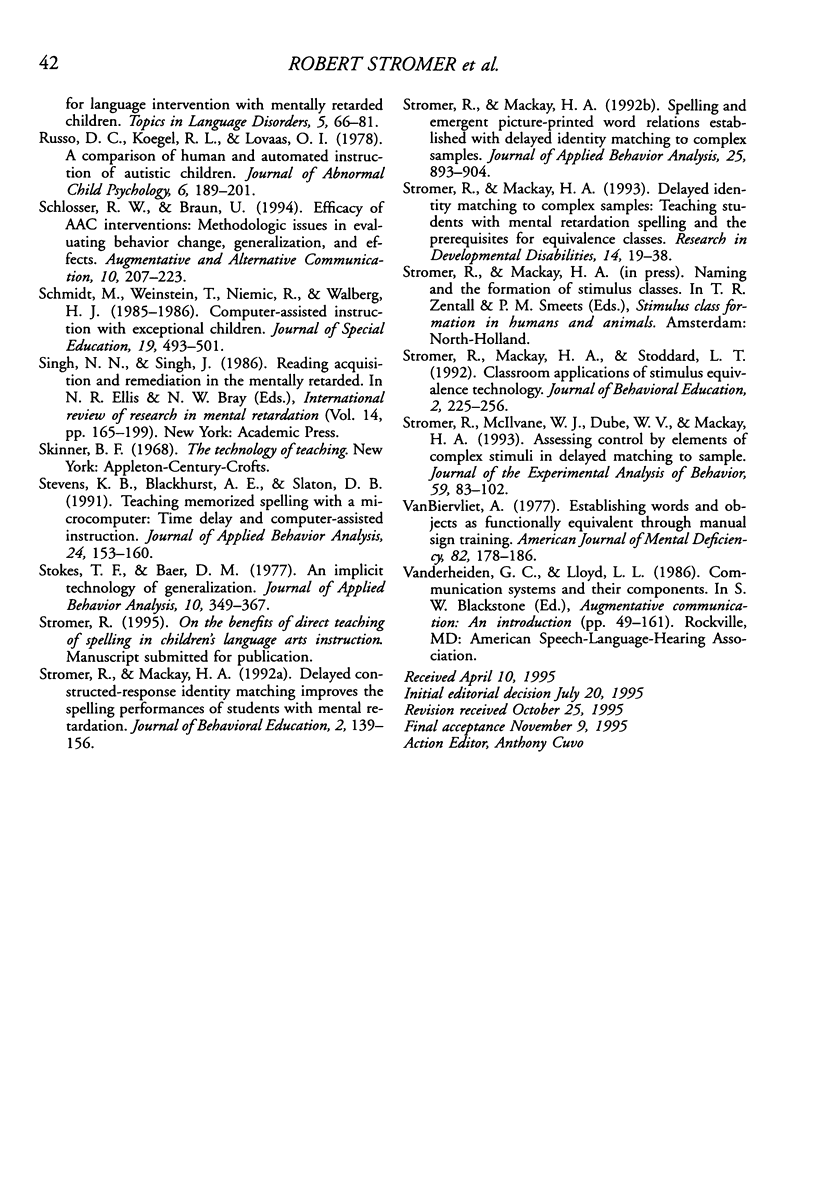
Images in this article
Selected References
These references are in PubMed. This may not be the complete list of references from this article.
- Agran M., Martella R. C. Teaching self-instructional skills to persons with mental retardation: a descriptive and experimental analysis. Prog Behav Modif. 1991;27:36–55. [PubMed] [Google Scholar]
- Baer R. A. Correspondence training: review and current issues. Res Dev Disabil. 1990;11(4):379–393. doi: 10.1016/0891-4222(90)90024-3. [DOI] [PubMed] [Google Scholar]
- Browder D. M., Lalli J. S. Review of research on sight word instruction. Res Dev Disabil. 1991;12(3):203–228. doi: 10.1016/0891-4222(91)90008-g. [DOI] [PubMed] [Google Scholar]
- Constantine B., Sidman M. Role of naming in delayed matching-to-sample. Am J Ment Defic. 1975 May;79(6):680–689. [PubMed] [Google Scholar]
- Dube W. V., McDonald S. J., McIlvane W. J., Mackay H. A. Constructed-response matching to sample and spelling instruction. J Appl Behav Anal. 1991 Summer;24(2):305–317. doi: 10.1901/jaba.1991.24-305. [DOI] [PMC free article] [PubMed] [Google Scholar]
- Ferretti R. P., Cavalier A. R., Murphy M. J., Murphy R. The self-management of skills by persons with mental retardation. Res Dev Disabil. 1993 May-Jun;14(3):189–205. doi: 10.1016/0891-4222(93)90030-n. [DOI] [PubMed] [Google Scholar]
- Horner R. D., Baer D. M. Multiple-probe technique: a variation on the multiple baseline. J Appl Behav Anal. 1978 Spring;11(1):189–196. doi: 10.1901/jaba.1978.11-189. [DOI] [PMC free article] [PubMed] [Google Scholar]
- Hughes C. Independent performance among individuals with mental retardation: promoting generalization through self-instruction. Prog Behav Modif. 1991;27:7–35. [PubMed] [Google Scholar]
- Lovaas O. I., Koegel R. L., Schreibman L. Stimulus overselectivity in autism: a review of research. Psychol Bull. 1979 Nov;86(6):1236–1254. [PubMed] [Google Scholar]
- Mackay H. A., Ratti C. A. Position-numeral equivalences and delayed position recognition span. Am J Ment Retard. 1990 Nov;95(3):271–282. [PubMed] [Google Scholar]
- Russo D. C., Koegel R. L., Lovaas O. I. A comparison of human and automated instruction of autistic children. J Abnorm Child Psychol. 1978 Jun;6(2):189–201. doi: 10.1007/BF00919124. [DOI] [PubMed] [Google Scholar]
- Stevens K. B., Blackhurst A. E., Slaton D. B. Teaching memorized spelling with a microcomputer: time delay and computer-assisted instruction. J Appl Behav Anal. 1991 Spring;24(1):153–160. doi: 10.1901/jaba.1991.24-153. [DOI] [PMC free article] [PubMed] [Google Scholar]
- Stokes T. F., Baer D. M. An implicit technology of generalization. J Appl Behav Anal. 1977 Summer;10(2):349–367. doi: 10.1901/jaba.1977.10-349. [DOI] [PMC free article] [PubMed] [Google Scholar]
- Stromer R., Mackay H. A. Delayed identity matching to complex samples: teaching students with mental retardation spelling and the prerequisites for equivalence classes. Res Dev Disabil. 1993 Jan-Feb;14(1):19–38. doi: 10.1016/0891-4222(93)90003-3. [DOI] [PubMed] [Google Scholar]
- Stromer R., Mackay H. A. Spelling and emergent picture-printed word relations established with delayed identity matching to complex samples. J Appl Behav Anal. 1992 Winter;25(4):893–904. doi: 10.1901/jaba.1992.25-893. [DOI] [PMC free article] [PubMed] [Google Scholar]
- Stromer R., McIlvane W. J., Dube W. V., Mackay H. A. Assessing control by elements of complex stimuli in delayed matching to sample. J Exp Anal Behav. 1993 Jan;59(1):83–102. doi: 10.1901/jeab.1993.59-83. [DOI] [PMC free article] [PubMed] [Google Scholar]
- VanBiervliet A. Establishing words and objects as functionally equivalent through manual sign training. Am J Ment Defic. 1977 Sep;82(2):178–186. [PubMed] [Google Scholar]



